Sales Success 101: Essential skills that distinguish the top performers
Whether you’re a sales rep or a sales leader, you’ve likely overlooked a simple concept in your search for sales success:
Once you’ve achieved moderate success in sales, getting to the next level is limited by your weakest link.
That’s it. Becoming a good salesperson is simply the result of working hard to improve your weaknesses.
The good news is that anyone can become a better salesperson if they understand what sales success looks like, what top-performing sales people do differently and are prepared to put in the hard yards.
In this article, we’ll show you all of that and more to put you and your team on the path to becoming better salespeople.
5 successful sales habits to adopt
Extraordinary sales success results from compounding effects.
Here are a few thought-provoking data points that illustrate this point.
None of these data points are very interesting by themselves. But they become massively interesting when you look at them all together. When you “see the forest for the trees.”
Adopt these sales habits below to give your team a huge competitive advantage.
Here’s the first one:
1. Great salespeople listen more than good salespeople
Their “talk to listen” ratio is around 46% when cold calling. Average salespeople are in the high 60’s:
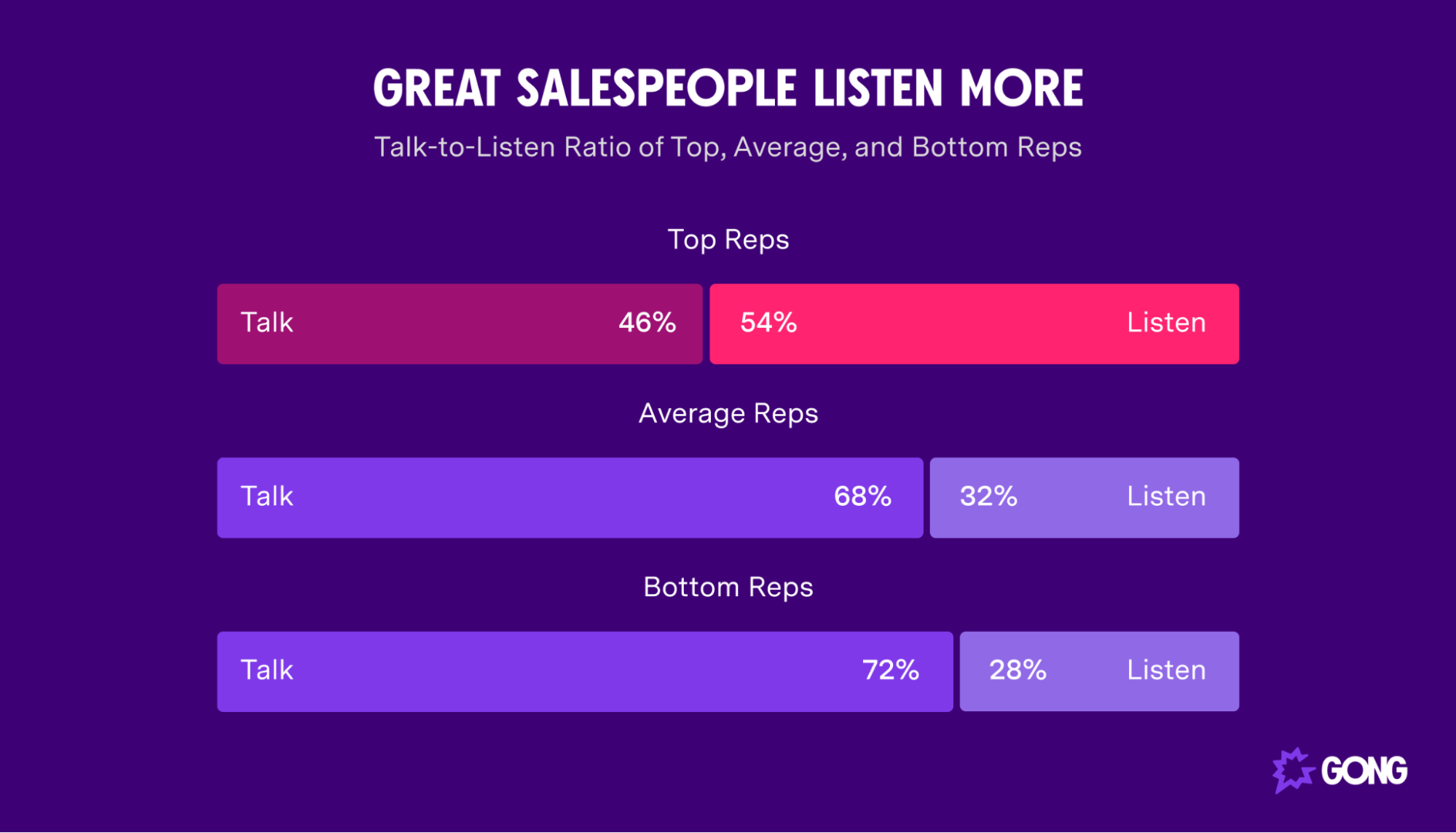
Now here’s a critical point for you to absorb:
On its own, this “listening habit” does not lead to dramatically higher performance.
But the story continues. Here’s the next part of it:
2. Great salespeople respond to objections with questions more often
Average salespeople jump straight to answers more often:
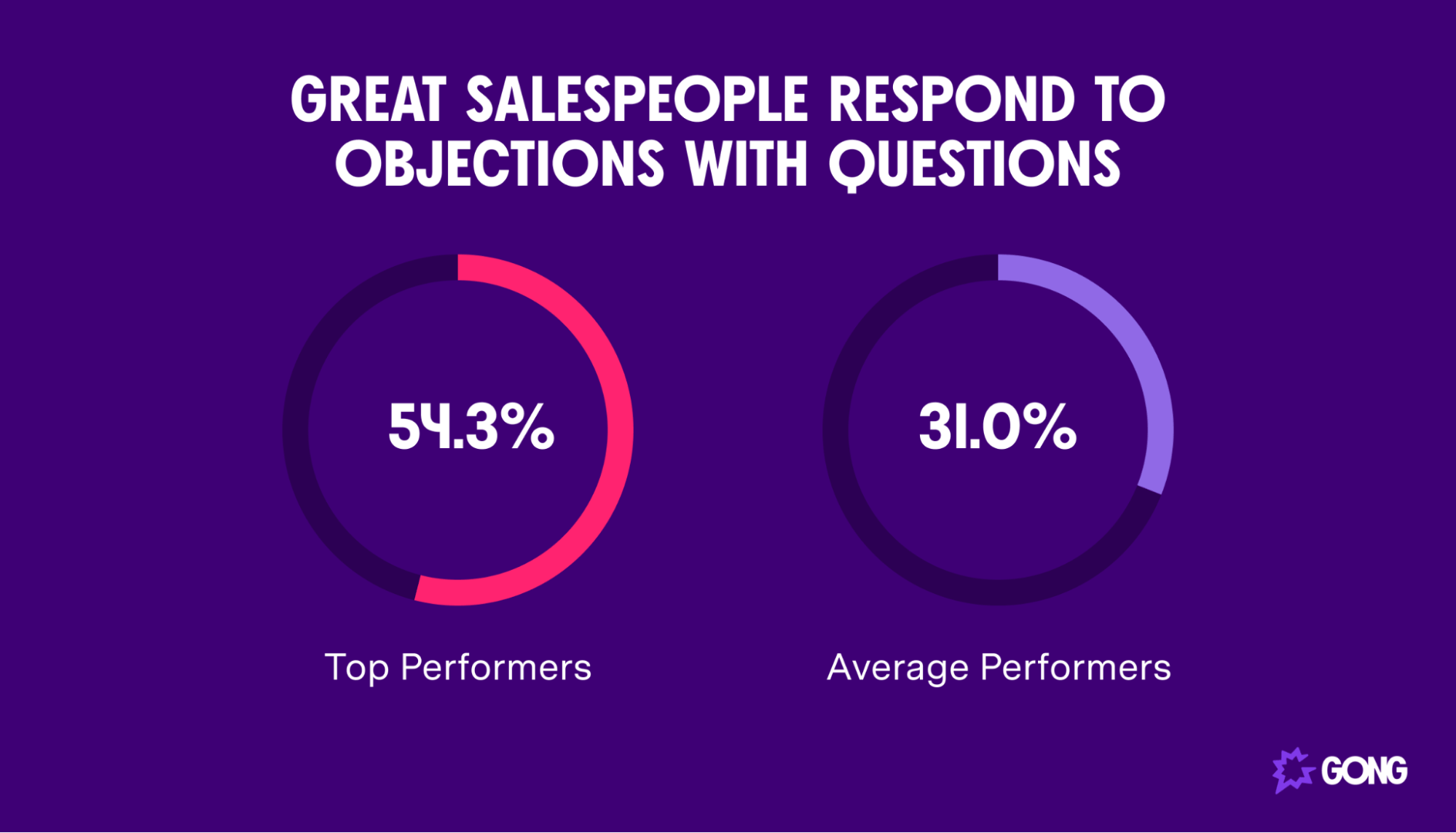
Great salespeople clarify what’s causing the objection before jumping to an answer.
Average salespeople tend to jump the gun, sometimes addressing the wrong thing.
Again, take note:
This difference in objection handling habits isn’t massive.
But when you combine it with the first skill – listening more – these two skills have more power together than they do separately…
The whole is greater than the sum of its parts.
We’re not done yet.
3. Great salespeople spend more time scheduling “next steps” with their buyers
They take a leadership position, make recommendations, and spend more time with the buyer mapping out a set of actions to move the deal forward.
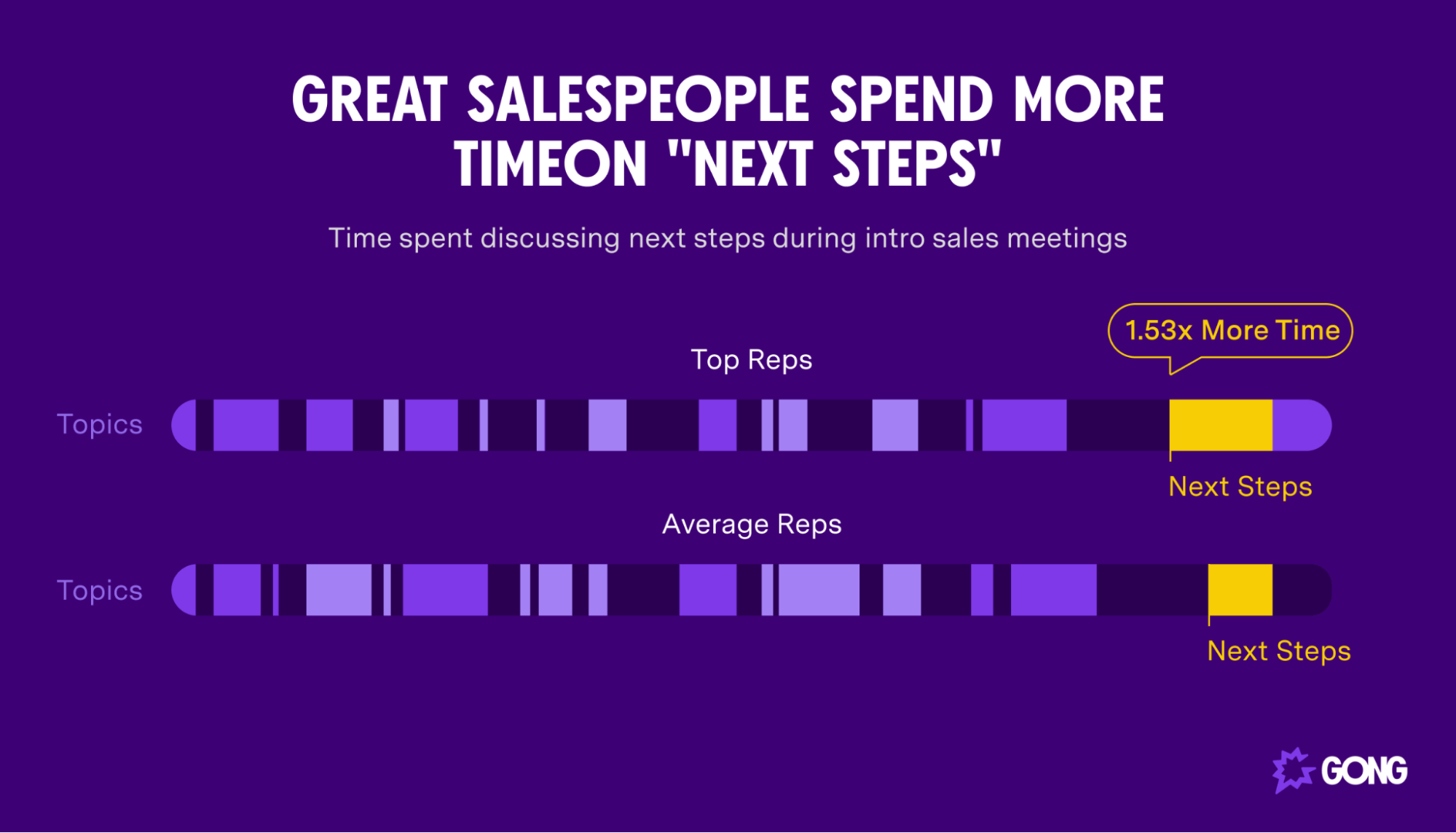
Would that simple act matter if they were deficient in other areas of selling?
Nope.
They wouldn’t even get to talking about next steps if they were weak in other areas.
But when you combine it with the rest of their skills, you’ve got a chain-link system that leads to a crazy successful sales career.
4. Great salespeople explain
What you say matters as a salesperson, and that’s especially true for top sellers.
The top-performing sales professionals use explanatory words (imagine, because, that means, etc.) 31% more often than average performers.
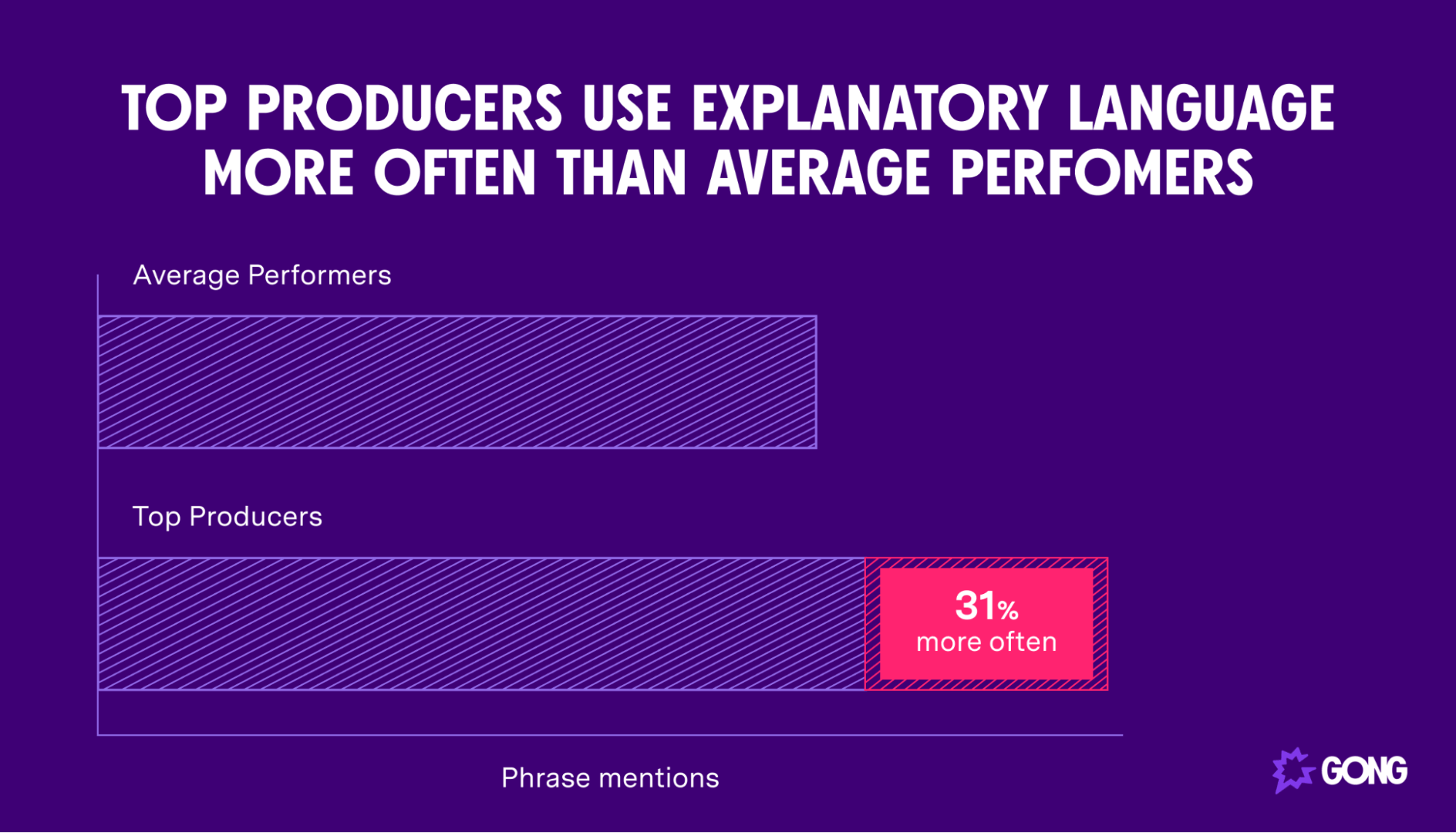
Why are these words so effective? Because people — potential customers in particular — love to understand why things happen.
Explanatory words help top sellers paint a full picture of exactly how their solution will solve their buyer’s pain points and what buyers can expect when using it.
5. Great salespeople conduct more research
It takes a lot of effort to convert buyers, especially when you’re dealing with enterprise-level accounts and multiple decision-makers.
This is where great research comes in as another factor that separates average performers from the very best salespeople.
The more sellers research and understand their buyers, the easier it becomes for them to pitch solutions to their problems.
You won’t be surprised to hear, then, that top performers are always researching. Over three-quarters of them say they always perform research before cold outreach, compared to 47% for other sellers.
What separates great salespeople from the rest is hard to see. That’s because they’re only marginally stronger in each area of the sales process.
I could keep illustrating this concept with more data points. But I’m guessing you’ve absorbed the takeaway by now:
Great salespeople do EACH area of sales just a few points better than their average peers.
It’s the accumulation of small advantages that compound on each other that wins.
In fact…
A single advantage in sales has no power.
At least by itself.
But when you add a handful of small competitive advantages together to form a system, you get a compounding success rate.
4 ways to breed sales success in your team
Creating sales success isn’t just up to the individual. You, as a sales manager, have a large role to play, too. Here’s how you can build a successful sales team.
1. Track the right KPIs
The first step is to understand exactly what level your sales reps are currently operating at by monitoring these crucial sales KPIs.
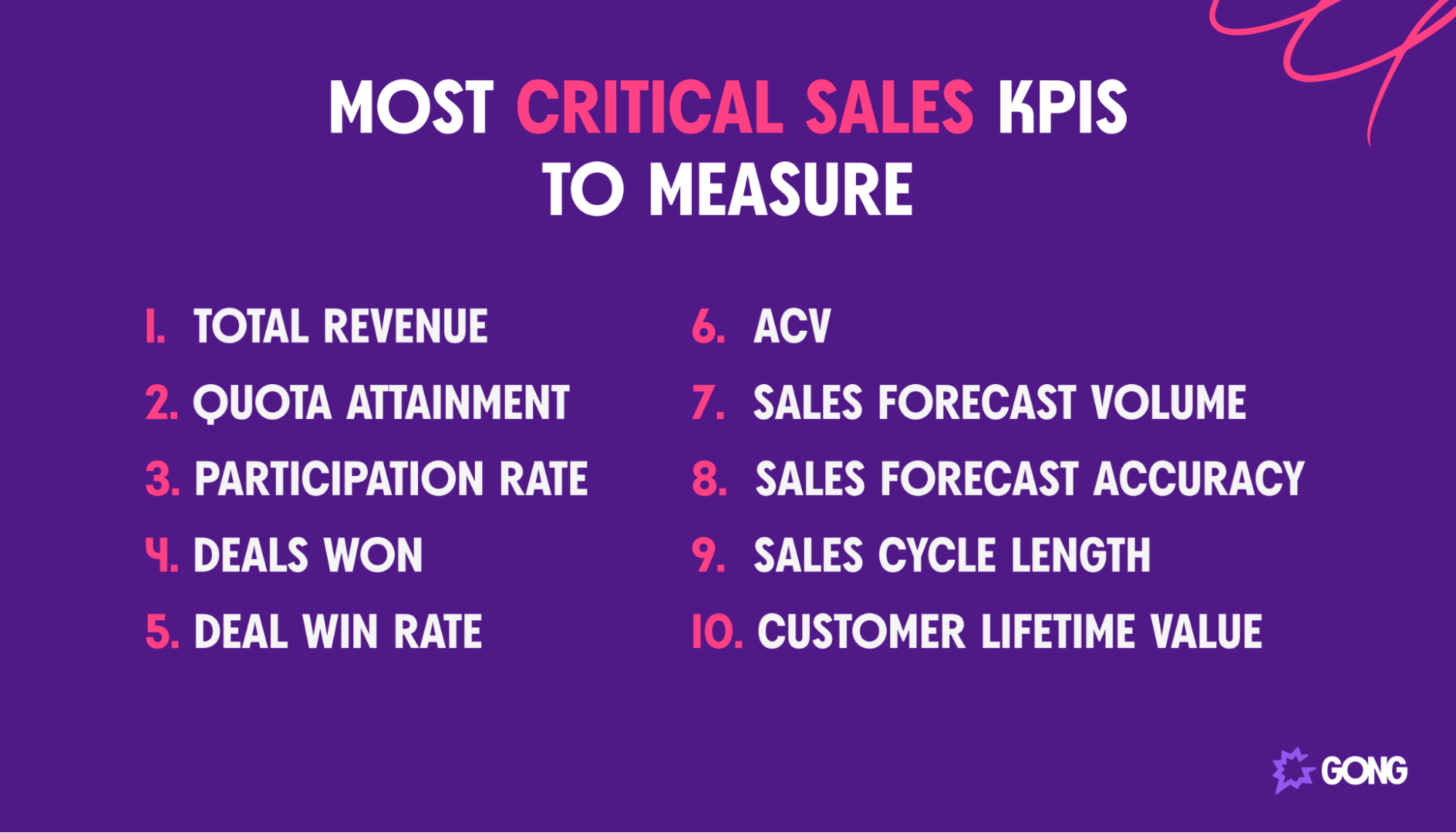
You can’t fully understand which sales representatives need help to become successful or how to help them from sales volume alone.
While you can measure almost everything, given the power of today’s sales tools, we recommend only tracking the KPIs that intersect with your sales goals. Customer lifetime value may not be the best KPI for young sales teams in early-stage startups, for instance.
You’ll want to set a target for every KPI you track. That way, you’ll have a benchmark to understand who’s doing a good job and in which critical areas reps need to improve.
2. Choose an appropriate sales methodology
Sales methodologies can help or hinder sales success.
You have to consider not only the sales methodology that will best suit your sales reps but also the methodology that will best suit your product and market.
So it’s important to choose a methodology that lets your reps shine.
If in doubt, we’d recommend one that forces your reps to take a consultative approach so that they listen more, explain more, and improve their objection handling techniques.
Sandler selling and Challenger selling are both good choices.
However, but any of the methods in our list of the top 12 sales methodologies may work.
3. Identify and remove sales process and pipeline issues
A problem with your sales process and/or pipeline can impede the performance of all your reps, not just the underperformers.
These issues can be hard to find, but they become a lot easier if you’re already tracking KPIs and setting targets on a range of pipeline metrics (meetings booked, meetings attended, length of sales cycles, etc.).
What you’re looking for here is any area where almost every single sales person is struggling to hit your benchmark.
One possible issue could be low sales meeting attendance.
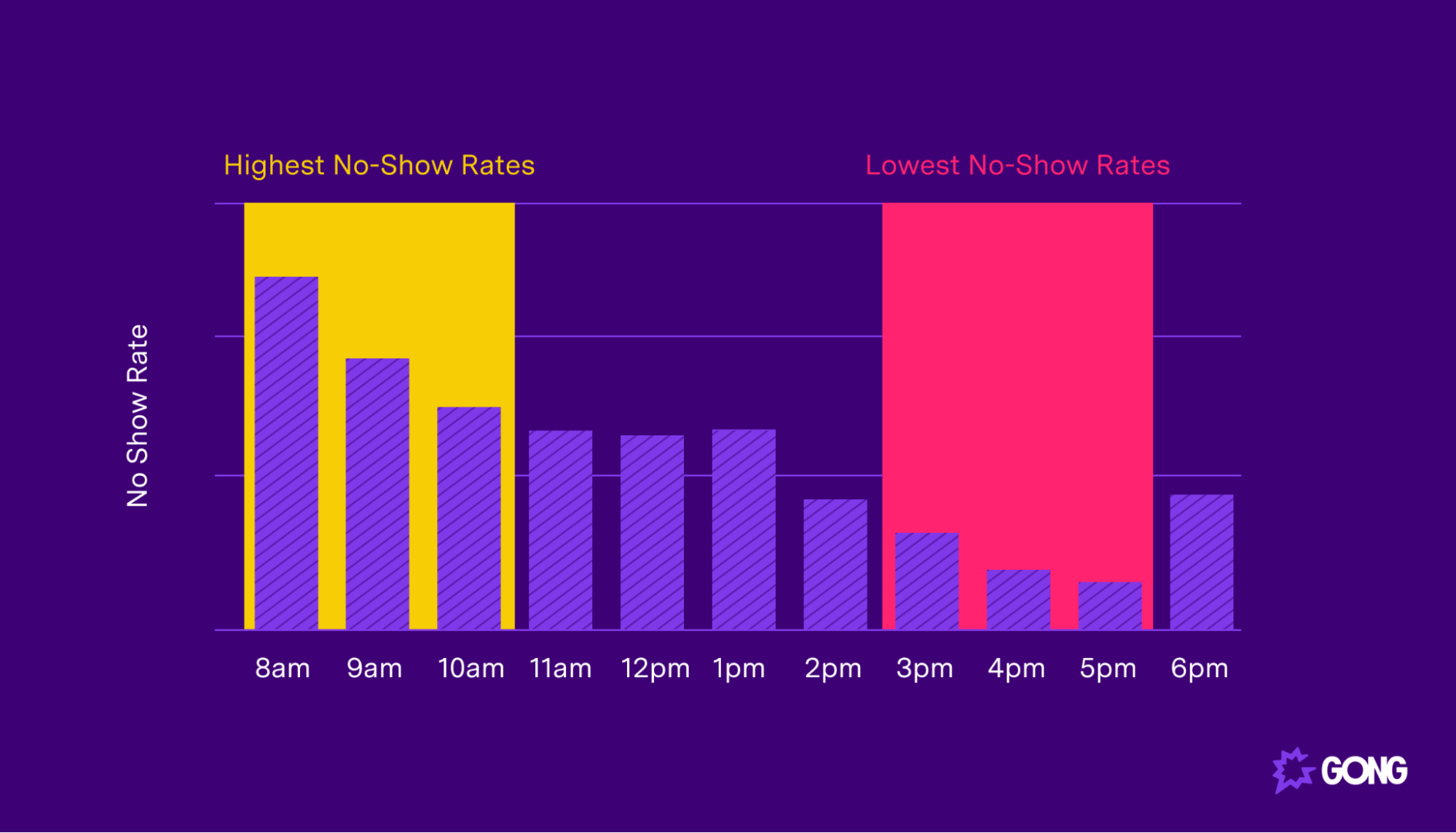
This can be just as much a problem with your process or your product as a problem with your reps — especially if your sales process encourages reps to schedule meetings in the morning.
Our research shows that meetings booked later in the afternoon have significantly lower no-show rates than those scheduled for the morning.
4. Adopt sales tools
If you want to improve the success of your sales organization, sales tools are a no-brainer.
Sales tools like Salesforce and Gong make it easy to see where reps are going wrong — like talking when they should be listening, for instance.
Sales tools can also help you better analyze your sales process to identify the kinds of issues we discussed in the previous point.
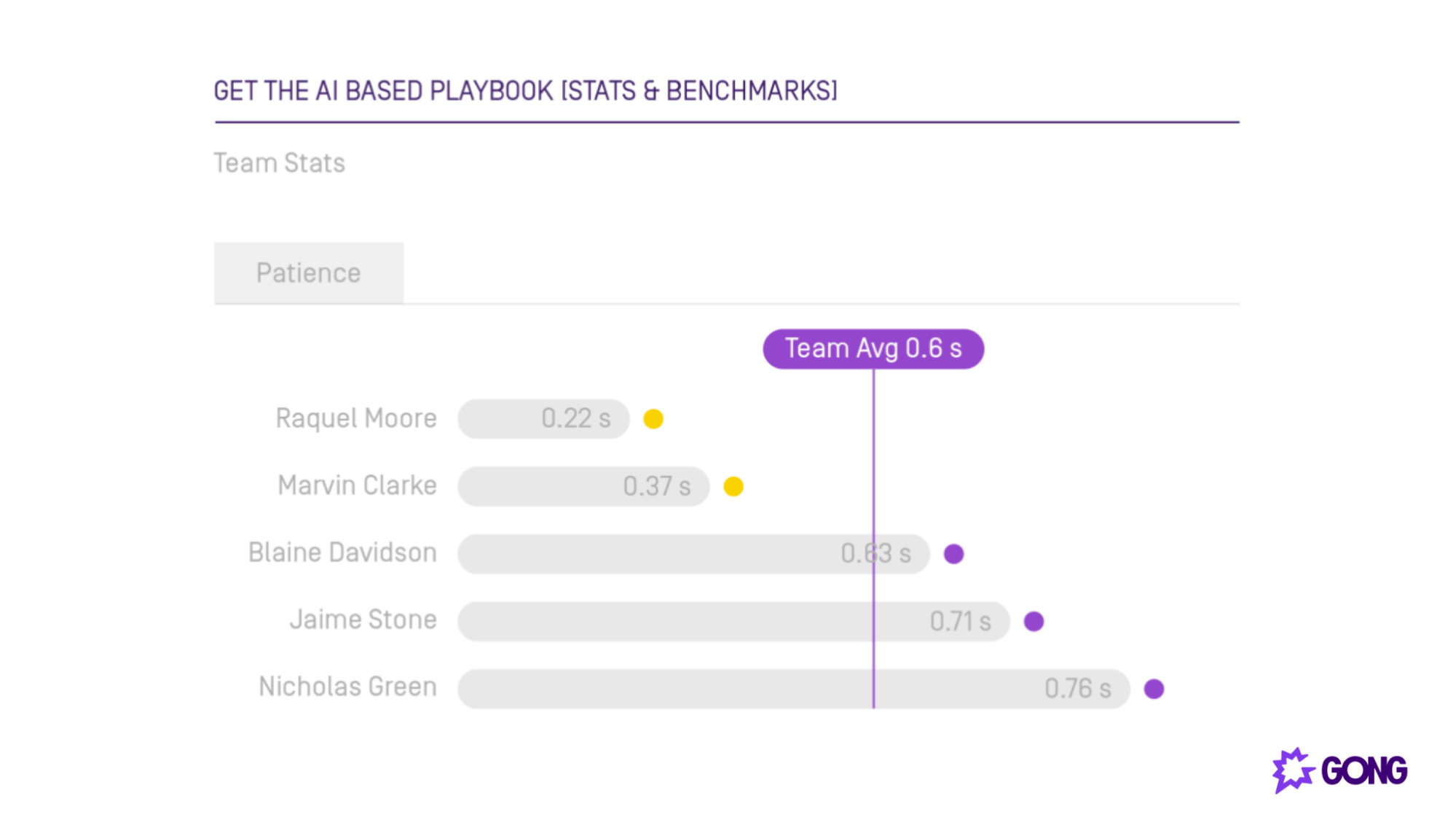
Furthermore, sales tools can help your sales team improve its performance without your input. Gong Assist, for instance, provides AI-generated warnings and recommendations to help deals progress faster.
Gong Assist can also automate time-consuming non-selling activities, allowing your reps to spend more time building buyer relationships.
Sales success compounds
It’s not enough to work on just one of the abits listed above. You need to work on them all.
That’s because great salespeople aren’t simply a bit better than their peers in one area. They wouldn’t be set apart from their average peers by being 25% better at one element of the sales process.
That wouldn’t be enough to separate them out and make them superstars.
The truth is, they’re usually only 10% better than their peers … but that’s across six or more areas.
As you can see from the graph above, the difference between getting 1% better and 1% worse each day is huge. Don’t take action or get just a little bit worse, and you’re only 0.03x worse off. Get 1% better every day for a year, however, and you’ll see a 37x improvement.
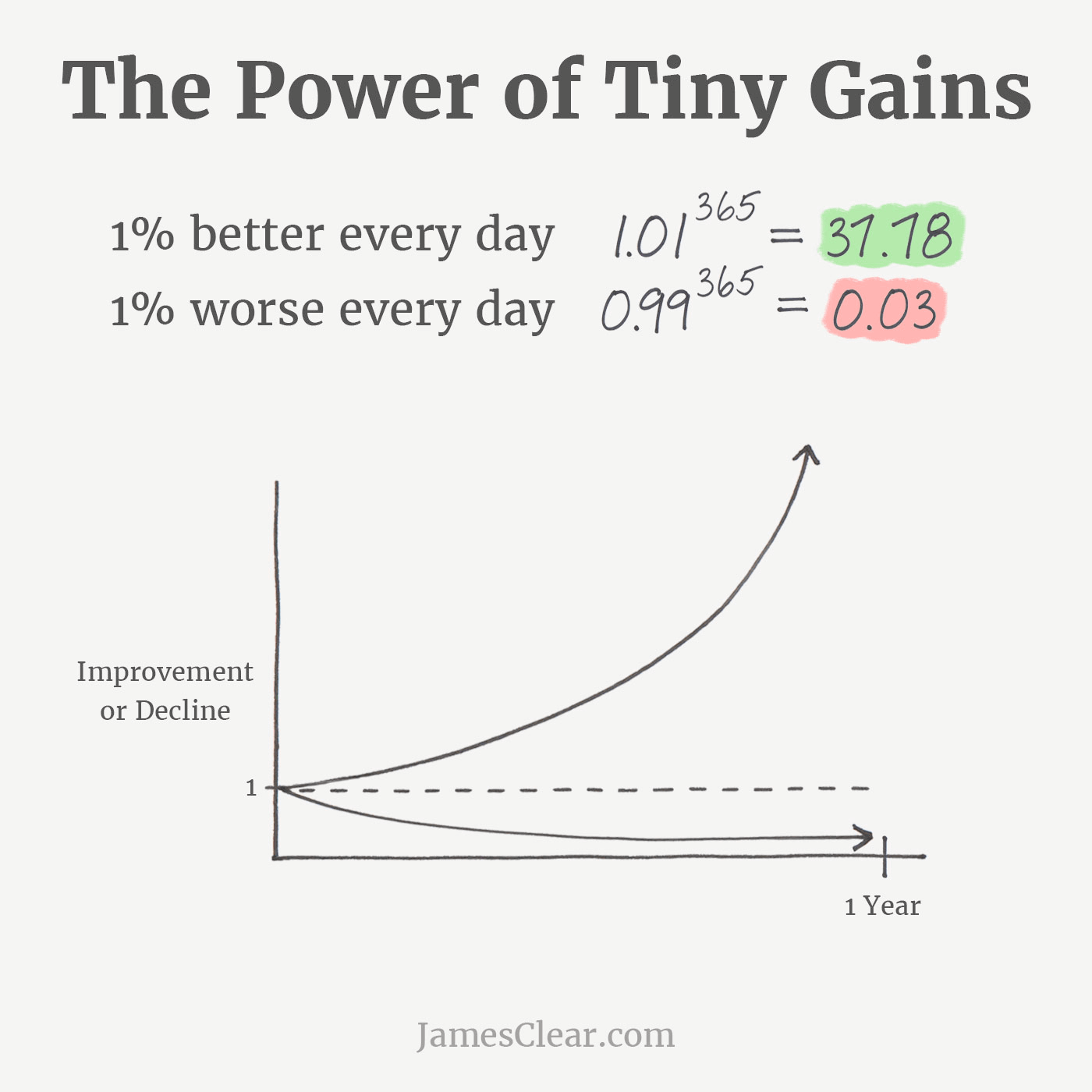
Average reps aren’t making these improvements. But great sales reps are. That’s a massive gap caused by a handful of tiny differences. Being 10% better than your average peers in six areas doesn’t make you 10% better overall.
Heck, it doesn’t even make you 25% better.
It makes you 77% better.
Those small 10% differences across six areas compound on each other. That’s what can make you an order of magnitude better than your peers.
These improvements don’t come easily. There are no overnight successes in sales. Great salespeople become great salespeople by making tiny improvements every day.
So not only are successful salespeople a tiny bit better in every area, but they’re also constantly improving their skills in those areas. You need to do the same if you want to keep up.
Become a better seller with our high impact video series
If you want to become a well-rounded, superstar sales professional, I’ve got good news for you.
I’ve created a FREE Sales Success Master Class video series.
Here’s how it’s different from other sales video series:
It’s designed to help you build a chain-link system of sales skills. One that shoots you into the stratosphere of sales success.
Most sales courses don’t recognize the “chain-link” nature of sales success. As a result, they fall short. The entire premise of this course is that the chain-link system is what leads to success.
Here’s how the video series works:
There are five videos and each one is 15 to 50 minutes long.
Each sales training video addresses a core “chain-link” of sales success:
- Discovery call mastery
- Presentations that sell
- Objection handling mastery
- Storytelling that closes deals
- 7 strategies for winning competitive deals
When you sign-up via email for FREE, you can access the first video immediately.
You’ll get one more video every few days.
BUT keep in mind that:
These videos aren’t a thinly-veiled pitch for a product.
In fact, Gong (my company) is only mentioned a few times in passing across all five videos!
No joke.
Instead, this series contains rich material, crafted with YOUR success in mind. Not mine.
Ready to take it for a spin?
Sign-up for the Sales Success Master Class video series for FREE here.